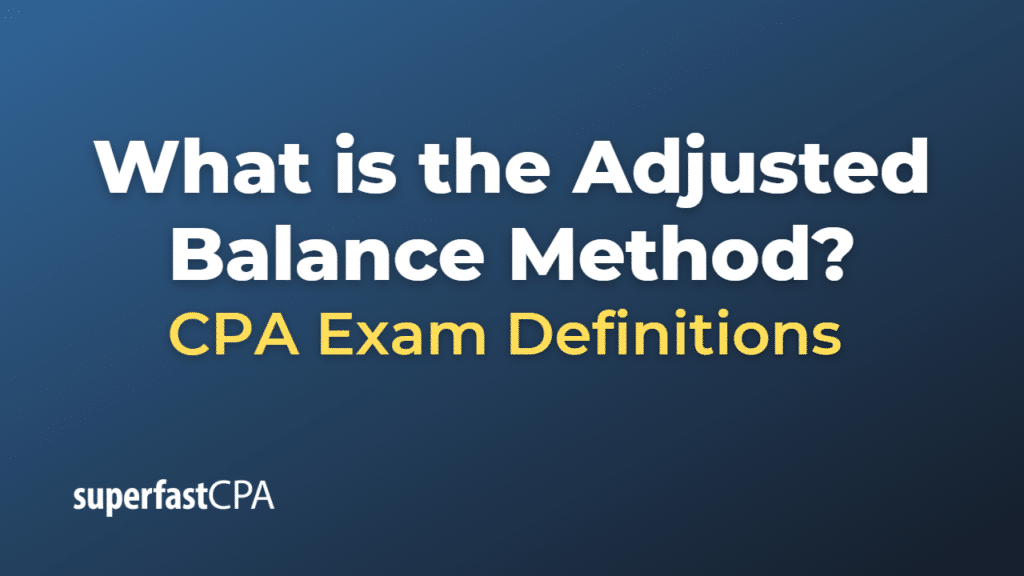Adjusted Balance Method
The adjusted balance method is a method of calculating the finance charges on a borrower’s account, typically used by credit card companies. This method takes into account the account balance at the end of the billing cycle, subtracting any payments and credits made during that period, and adding any new charges or fees.
Here’s a step-by-step explanation of the adjusted balance method:
- Start with the account balance at the beginning of the billing cycle.
- Subtract any payments and credits made during the billing cycle.
- Add any new charges or fees incurred during the billing cycle.
- Calculate the finance charge based on the resulting adjusted balance and the applicable interest rate.
The adjusted balance method is generally considered to be more favorable to borrowers than other methods like the average daily balance method or the previous balance method. This is because the adjusted balance method does not include new charges or fees in the calculation, which can result in lower finance charges for the borrower.
Example of Adjusted Balance Method
Let’s assume you have a credit card with an interest rate of 12% per annum, and the billing cycle is 30 days. Here’s an example of how the adjusted balance method would work:
- Beginning balance: $1,000
- Payment made on Day 10: $300
- New purchase on Day 20: $200
Now, let’s calculate the adjusted balance:
- Start with the beginning balance: $1,000
- Subtract the payment made on Day 10: $1,000 – $300 = $700
- Add the new purchase on Day 20: $700 + $200 = $900 (Note that this is not included in the calculation of the finance charge for this billing cycle.)
Now, we’ll calculate the finance charge:
- Annual interest rate: 12%
- Daily interest rate: 12% / 365 = 0.03288%
- Monthly interest rate: 0.03288% x 30 = 0.9864%
- Finance charge: $900 x 0.9864% = $8.88
So, the finance charge for this billing cycle using the adjusted balance method would be $8.88.













